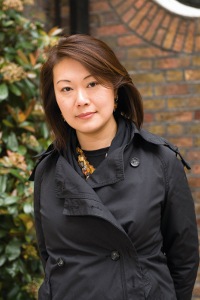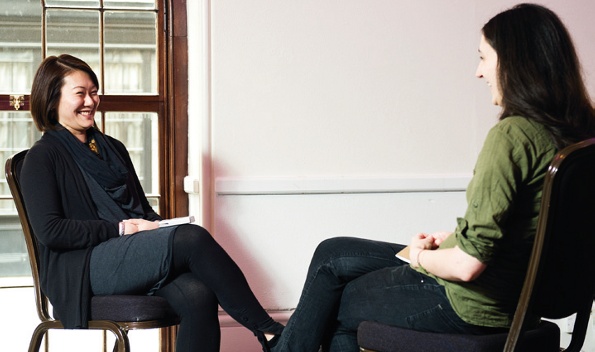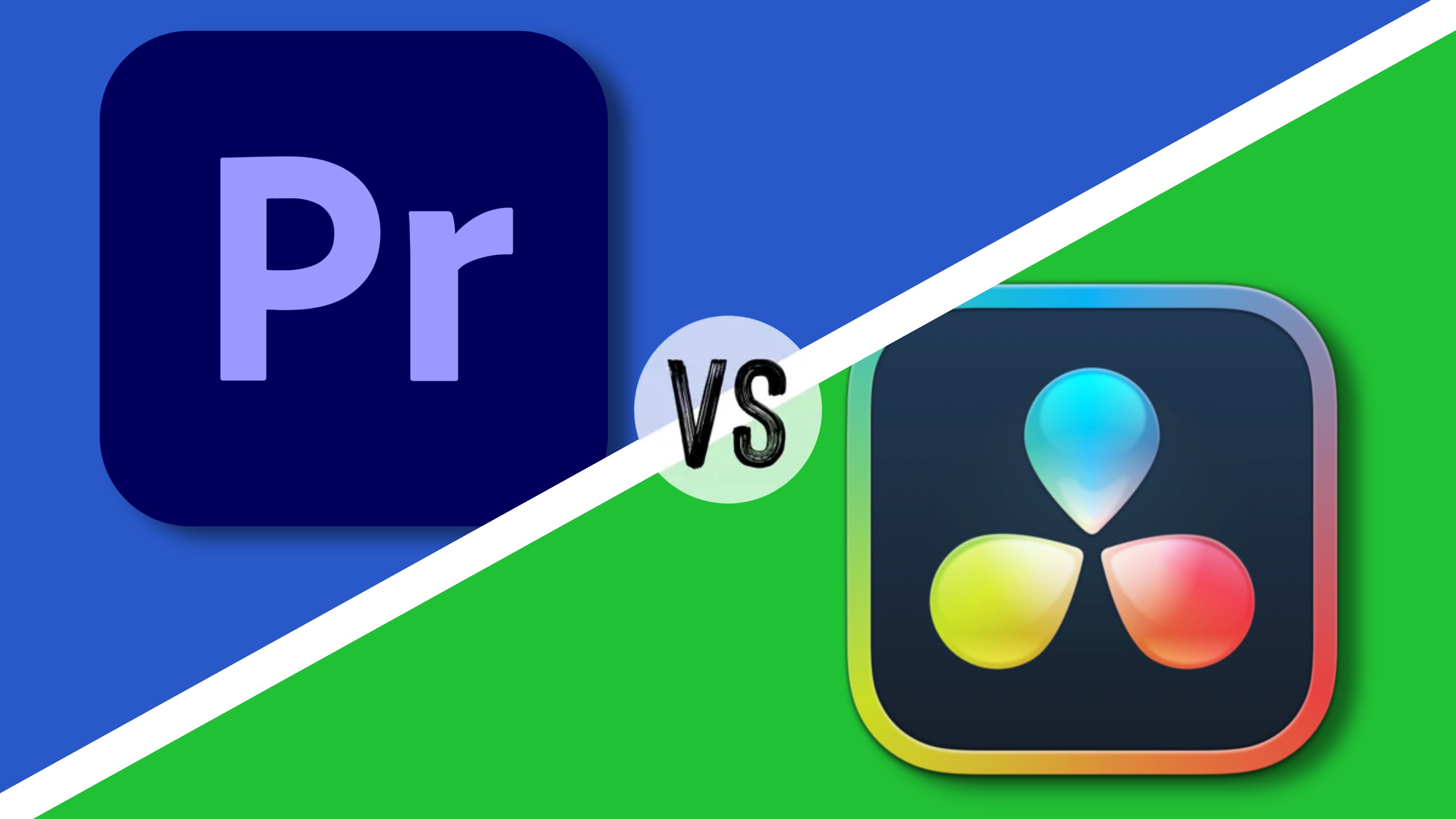Stephanie Troeth on trusting gut instincts
User experience strategist Stephanie Troeth chats with Tanya Combrinck about being a web jack-of-all-trades and bettering the world with UX
Stephanie Troeth’s main job title is subtly different from the terms we usually hear within the field of user experience. She’s a user experience strategist, a discipline that “has yet to hit mainstream”, she tells me, which involves working in the place where user experience and business objectives meet.
I ask her how she describes her work, and she laughs: “With difficulty!” Over her 15-year career, Troeth has tried out almost every aspect of web building, from backend development to user research and product strategy. “I usually try to avoid the question, but if I have to answer, I will quite often use a metaphor. So if I’m talking to someone who doesn’t understand the web at all, I will try to relate it to a bad experience they’ve had online, say, how difficult it is to book a holiday. My job is to fix that. I don’t think my dad really knows what I do!”
Troeth’s entry into the technology industry happened almost by accident. “I wanted to get into music therapy, but my parents said I wouldn’t get a job. I chose computer science because it allowed me to do a unit of arts, so I could do a music minor. I like figuring out how things work, so I was going to study electronic engineering, but it didn’t allow the unit in the arts. Computer science was the next best thing.”
It was during her time at university that Troeth first encountered the web. “I got into it quite early, about 1995. A classmate said to me one day ‘This HTML stuff is cool, you should try it out!’. So after classes we would be building websites just for the fun of it, to see what we could do. When I finished university, I thought ‘I really like this stuff, I could do it all day’, but there weren’t any web jobs. I ended up at a telecomms company, and I lasted four months. After that I spent two or three years building backend, writing web applications in Perl.
It was back in the time when to build interfaces you really had to be able to code to do anything interesting with user feedback and interaction. So I developed for a while and gradually moved to coding frontend when CSS support started to become really interesting. JavaScript started to become more reliable in browsers, so I thought this would be more fun than backend coding.”
Jack-of-all-trades

It was Troeth’s early entry into the web industry that gave rise to her status as a jack-of-all-trades. “Back in the early days of the web, there was a time when you needed to know everything. There was a time when I was the web team. I was lucky to meet web designer Dey Alexander who was into best practices at the time who set me on the path to working with web standards, paying attention to usability and accessibility. Over the years of volunteering for the Web Standards Project and trying to coach web developers to do the right thing, I just picked up on all these different disciplines.”
One of the things Troeth is best-known for is her involvement in best web practices and web standards. Until recently she was editor in chief of Web Standards Sherpa, a project that publishes articles on best practice and enables web professionals to get advice and feedback. I ask her how she became involved. “Sherpa is an extension of something I’ve done for over 10 years – creating resource for the community on best web practices. When the idea for the project was circulating, I put my hand up and said I’d help start it. Aaron Gustafson was happy for me to take on a role that began with coming up with the UX concept, followed by really making it happen as the editor in chief. I really liked the vision and idea that Gustafson had: short, pragmatic articles on best practices, based on real examples, that could be read over a cup of coffee. I enjoyed this project tremendously because we were a small, smart team, and I had the capacity to put forward a lot of things I believed in: a strong editorial voice, active collaboration with all our authors. We were also able to measure things as we went along. I didn’t stay long enough on the project to really see through some changes, but I’m very glad that Emily Lewis has taken over the role — she will do great things with Sherpa.”
Many web practitioners focus their work around more narrow specialisms, but Troeth takes a more holistic approach. “I think the core question is always, ‘what’s the best way to do something?’ It’s less important whether it’s information architecture, interaction design, or content strategy (it doesn’t matter what we call it) because that changes over time. What’s important to me is that you get the best result possible, so that’s why I really haven’t cornered myself into one area. It doesn’t bother me that I’m learning all the time. It’s something I thrive on.”
Troeth is currently working as a user experience strategist, which is an unfamiliar term to most people. “The idea of ‘UX’ being executed from a strategic perspective has not yet hit mainstream, but it will soon, as the field of UX matures. Even then, I expect to see some internal community disputes on how we may be different from digital strategy, business strategy or customer experience (CX) design.”
Strategic UX makes use of the connections between traditional UX practices and other areas of a project or company. “User experience has processes that help us understand user needs and how to design for users. If your business strategy is based on your user experience strategy, you have a higher chance of meeting your customer needs. Obviously it’s not a black and white equation — there are other factors at play.”

UX strategists also realise that an organisation’s branding is well within their remit. “User experience as an area is maturing, especially towards finding those common meeting points with business priorities and customer experience. I think when we started paying attention to emotional design, we began to realise there can be a very close relationship between brand and user experience. Your brand is a differentiator in how a user experiences your product, and if they identify with you.”
A new perspective
This new way of thinking is giving rise to new ways of working. “Because it’s a shift in perspective, so our toolsets and the way we work has to change, both in the way we look at user research and the way we approach design. On the one hand, we can fall back onto methods more traditionally used in anthropology and social science, so we can learn to get much better ideas of understanding our users’ contexts when they use apps or websites that we build. At the same time, our tools for measuring and analytics have gotten more and more powerful. So we now have such a wide range of listening and testing tools at our disposal, and it doesn’t have to cost a lot. While I don’t think the one-way mirror usability lab testing idea will ever go away, it’s a very artificial set up, putting fellow human beings in an arbitrary situation. We’ll get better at gathering design insights by letting humans do what they are good at and using computers for what they are good for; let humans tell us what their contexts and motivations are. Let computers give us a real reflection on real usage patterns through analytics.”
This transition will require flexibility from both designers and usability testers. “Researchers need to stop believing that their research recommendations are gospel but rather, construct research findings as a wealth of possibilities that designers can use to generate interesting and relevant design solutions. On the same token, designers need to understand that what they are designing should prove or disprove a design assumption or hypothesis.”
So what does a UX strategist’s work entail? “The work of setting up what hypotheses to test and how to approach designing a solution is very much in the realm of UX strategy. The hard work needs to be put into refining our design priorities and choices as we go about building apps and websites. Some of this can be understood from existing customer usage patterns.
“I’m more intrigued by that grey area we like to call ‘innovation’. We lack tools and methods to help us understand user needs that haven’t yet come to light, and are yet not well articulated.”
In the absence of particular tools, Troeth sometimes relies on her intuition to pick out design elements to test. “The methods I am using now are a combination. When I interview users, there may be something in their thinking or something they said that sparks a hypothesis, and it may not be an exact thing that they said. This is a rare occurrence — and it’s a hard thing to spot because it would be piece of information we would typically consider as ‘outlier’ — as in you’d probably only get a mention from one or two people and not the masses. I can’t say if there’s a method for getting the ‘right information’, often I go into these conversations and see where they lead; my goal is to get a good grasp on a user’s context and underlying motivations. So, it’s nothing you can validate with existing data sets. What I would then do is to look for trends in existing data that may likely support this idea being true in the future and try and see if we can’t nail down the probability. It’s exhaustive and doesn’t always succeed, but there’s always a chance.
“This is where I think research is also a creative process. We tend to think of research as something that’s a dry and mimicking exact science, but I like to think of it as a process of open discovery, where what we establish has a varying level of uncertainty. In some ways it’s a strange thing, we like to think that research counters the ego of the designer, but I’m learning that there are cases where you as a researcher have to acknowledge that your gut feeling also matters.”
One of Troeth’s current areas of interest is the methodology of making websites usable for international audiences, and of localising products so as to tailor them to particular geographic regions. Her work involves conducting ethnographic research, often in the form of in-depth customer interviews, to discover aspects of culture and language that will affect how a website is received by an audience. “It’s like detective work: you’re trying to find out what’s not there, that should be there. I’m interested in the question we’re not asking.”

If internationalisation work is to be part of a project, things are much easier and cheaper if it’s carried out at the start. “There is a cost to internationalisation, and you have to do it upfront, otherwise it ends up being very expensive and difficult. Localisation also comes at a really high cost, because you have to think about things like whether your support is available in more than one language, or in different time zones. If you have local support you need to have the local, cultural context. You start getting into thing like ‘should we translate all our jokes?’ It’s a huge jump to make, and once you’ve done one little bit, you have to go all the way. It can be more offensive to do something half way than to not do it at all.”
Indeed, we’ve all seen big brands make ridiculous gaffes when trying to engage with overseas markets. It seems as though the risk of causing offense might be part of the territory of this kind of work. “That hasn’t happened to me personally, but if you do it wrong, then yes. You can’t consider localisation separately from cultural context. For example, people in Catalonia wouldn’t be pleased if there was a Spanish version of something, but not a Catalan version. In the same way, French is important to people in Québec. You can’t untangle this from the geopolitical context.”
Troeth believes that user experience techniques are currently being under-applied: they could be put to use in the wider world to achieve great ends. “In some areas, I think we’re not that good yet at communicating really difficult concepts, such as climate change or health issues.
“We could use lessons from the practice of user experience to help us get further. We have so many tools at our disposal to understand how people interact with information, we could be using these in the real world, rather than just for digital interfaces.”

Thank you for reading 5 articles this month* Join now for unlimited access
Enjoy your first month for just £1 / $1 / €1
*Read 5 free articles per month without a subscription

Join now for unlimited access
Try first month for just £1 / $1 / €1
Get the Creative Bloq Newsletter
Daily design news, reviews, how-tos and more, as picked by the editors.

Tanya is a writer covering art, design, and visual effects. She has 16 years of experience as a magazine journalist and has written for numerous publications including ImagineFX, 3D World, 3D Artist, Computer Arts, net magazine, and Creative Bloq. For Creative Bloq, she mostly writes about digital art and VFX.
